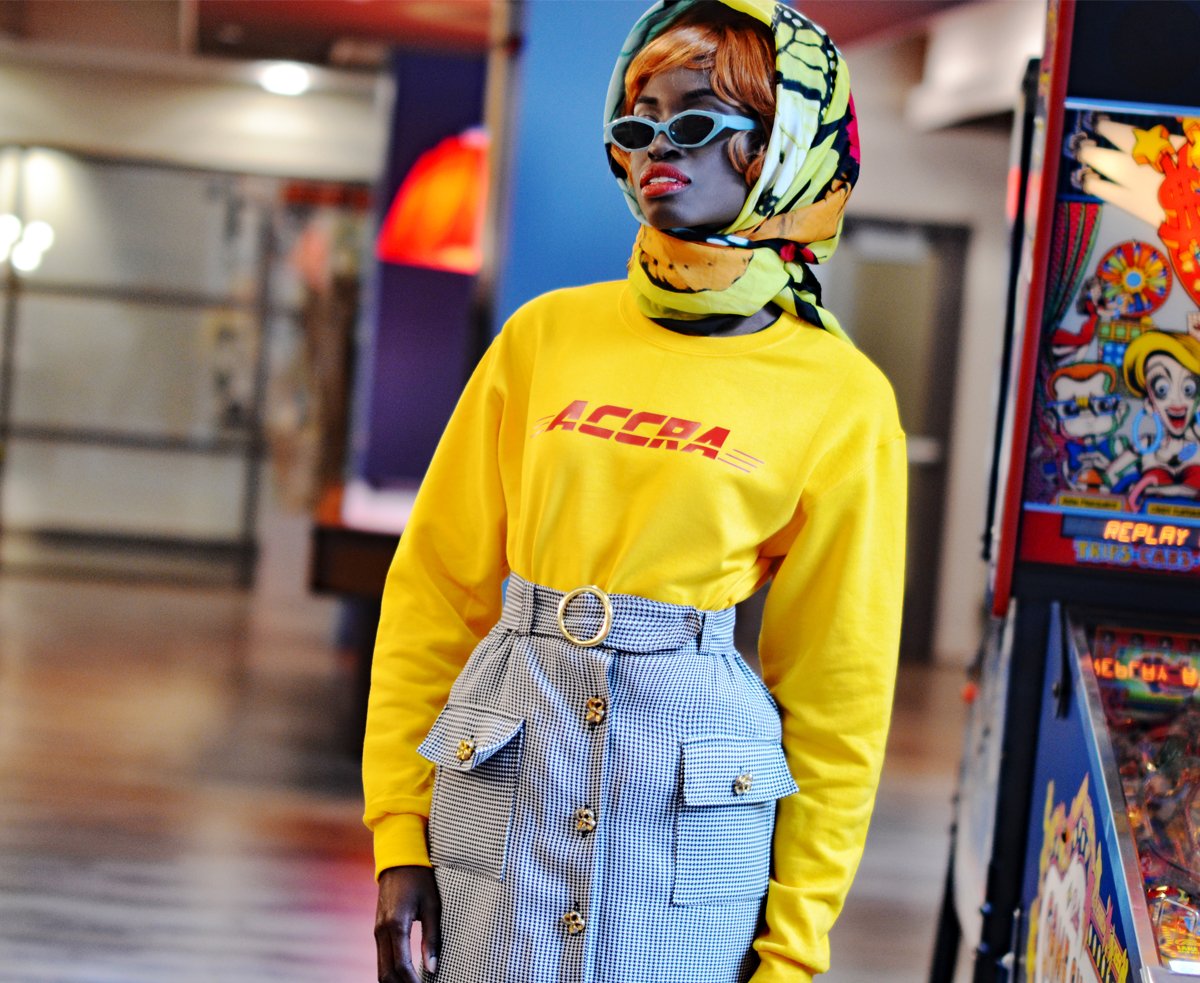Pop Caven is a streetwear brand that combines pop culture, cheeky plays with typography and African histories in their collections of tees and sweatshirts. Started in 2016 by sisters Joan and Doreen Caven, the name for the brand is a showing of gratitude towards their father who they credit for nurturing the “pop culture loving, classic film obsessed, African art history geeks we turned out to be”. The intention for the brand is to highlight African artists, musicians, tastemakers and influencers who continue to pushed back against the distorted views of the continent, and who solidified the importance of local knowledge systems and creativity.

They recognize that pop culture is large worldwide and that African people have an equally large buying power. Joan and Doreen take the nostalgia they have for their childhood, their exposure to global pop culture brands and mash them together with culturally significant references from Nigeria. One of their most recognizable tees sees the Coca Cola typeface with the words ‘Kola Nut’, which is sacred in Igbo culture (their own culture) and is used to welcome guests into one’s village or home. They have also used the FILA logo, and changed the words to ‘FELA’ as a tribute to one of Nigeria’s musical icons. There latest collection includes ‘Accra’ written in the DHL font, the ‘Africa is not a country’ slogan and ‘No Wahala’ [slang for no worries or no problem] with records, roses and leopards on tees. While these items take on a the character of a parody, each one serves as a platform to teach, inspire and remember. Wearers and viewers have to do a double take, flipping the script for these well-known logos and typefaces.

The Pop Caven website allows browsers to shop for their latest collections, as well as have access to information about fellow artists, designers and creatives of African descent in the section ‘Pop x Platform’. This is a direct step towards making sure creatives are able to present their work to a global audience, and offer the opportunity for them to build their own brands.
“Straight from Africa, delivered to the world”. This section in their brand bio emphasizes how the two aspects – their clothing and their platform for other creatives – combine to take ownership of creativity and distribution.
Check out the Pop Caven website for their latest tees and sweaters.










